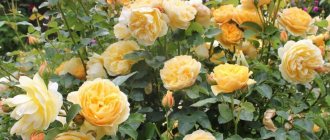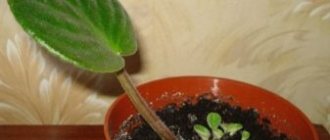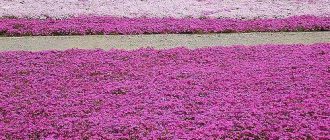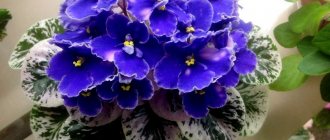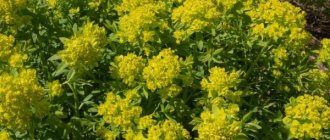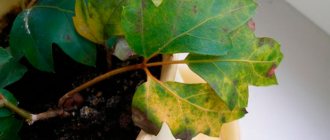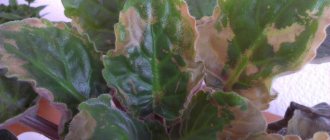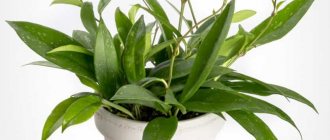To give the garden a decorative and exotic look, gray fescue is often used. This variety is loved by designers and ordinary owners of personal plots for its endurance and ability to remain green all year round. Externally, it is a low-growing, hemispherical bush with thin leaves twisted into a tube. In the article we will talk about the characteristics of the gray variety, name other popular varieties, consider the planting procedure, propagation methods and plant care.
What kind of herb is this, name in Latin
Festuca glauca, commonly known as blue fescue, belongs to the Poaceae family. The crop is an evergreen or semi-evergreen herbaceous perennial plant .
Blue fescue also has other names - gray, ashy.
In nature, the plant grows in any climate and on different soils. It can be found in meadows, steppes, forests located in areas with harsh, temperate, subtropical or tropical climatic conditions.
The history of the appearance of the dove-blue festuka
Blue fescue began to be cultivated as an ornamental plant recently - at the beginning of the 20th century, with the advent of fashion for wear-resistant, smooth, dense lawns. Beautiful grass came from the Baltic states, the Urals, and the Caucasus . It is also native to Central and Eastern Europe.
Fescue grass - description
The herbaceous perennial can have a height of ten to twenty centimeters. Some species that grow in nature grow to one or more meters. They have creeping or compact roots and leafy lateral vegetative shoots . At the base of the plant and at the nodes of the shoots there are linear leaves with a hairy or rough surface.
The width of the leaves reaches no more than one and a half centimeters. Along the vertical axis they are folded in half and appear even narrower. At the end of the leaf platinum there is an awl-shaped growth, and parallel veins run along the surface.
Fescue blooms begin in early summer. At this time, paniculate inflorescences with short spikelets are formed on it, which are held on a thin stalk. Each spikelet has a length of 0.5 to 1.5 centimeters. Long yellowish-green flower stalks rise above the foliage, which gives the bush an airy appearance.
The use of fescue in landscape design
Blue fescue is an ornamental grass intended for landscaping gardening areas, as well as:
- as a background plant, filling all the gaps in flower beds, borders, mixborders;
- as soil-strengthening lawn plantings on open slopes and slopes, allowing you to create a beautiful and unique carpet;
- as an elegant accent in the design of rock gardens;
- as a beautiful addition to the main elements of the composition, helping the ensemble acquire a holistic image;
- to create spectacular flower beds and mosaic panels in city parks.
Blue fescue combines harmoniously with other plants. Landscape designers recommend growing it next to conifers, barberries, small spreading shrubs and euonymus. The beauty of this cereal is best revealed by plants with massive leaves (geranium, geranium, cuff). An elegant contrast with other cereals (sedge, millet) is also effective.
On a note ! Gray fescue can both transform areas and become a beautiful background and element of landscape design, harmoniously combining with well-chosen neighbors.
Blue variety varieties
Varieties of gray fescue are characterized by the richness of the foliage color, the height of spherical bushes and panicles with peduncles. Among the common varieties :
- Freddy is a compact bush up to 20 cm high with bluish-green leaves.
- Meerblau – attracts attention with a sea green curtain.
- Elijah Blue is a plant not exceeding 30 cm in height, characterized by narrow, emerald blue foliage and gray-green inflorescences.
- Varna is an annual that boasts hemispherical bushes with bluish-blue leaves.
- Soiling - fascinates with the bluish or ashy coloring of the modified foliage.
- Festuca cinerea is a lush blue-green shrub reaching up to 60 cm in height.
- Intense Blue . The bushes are compact with cylindrical foliage of blue color with a grayish bloom.
Thanks to the rich variety of varieties, you can bring interesting ideas to life and create a stunning composition in any flowerbed.
You will learn more about the varieties of gray fescue from this article.
Types and varieties
Gray fescue. A favorite perennial among gardeners, it has foliage that is bluish-blue or silver-green. The bush, from fifty to sixty centimeters high, resembles a tussock and forms dense gray-green panicles. When the inflorescences fade, they become straw-colored. The most popular varieties:
- Glacial tit fescue is a grass with blue-gray narrow leaves that grows up to forty centimeters in height.
- Fescue Lapis lazuli is a plant with blue-silver leaves.
- Blue tussock fescue is a lush bush that produces a large number of greenish-blue narrow leaves.
Glacier tit and other varieties are unpretentious in care, but do not tolerate frost well.
Blue fescue. Ornamental grass from twenty to sixty centimeters high with bluish leaves in the form of needles. When they grow, the bush takes on a spherical shape.
Blue fescue has tall panicle inflorescences, the decorative effect of which begins in early summer and persists until frost, even after flowering. The plant tolerates frost well, however, adult bushes may freeze in snowless and cold winters.
Red fescue. The perennial is distinguished by narrow, red-green foliage thirty to forty centimeters long. The plant has dense, reddish side shoots and bare stems up to eight centimeters high. The leaf plates have a ribbed surface. Inflorescences in the form of panicles grow up to twelve centimeters. The variety prefers well-moistened soils and is not afraid of frost.
Sheep fescue. The low plant, twenty to thirty centimeters tall, consists of long, thin stems and bright green, narrow foliage. When the leaves grow, sheep fescue has the appearance of a spherical pillow. During flowering, drooping spikelets are formed, which are located on loose and oblong inflorescences. Sheep fescue is easy to care for, grows well in poor soils and can survive drought.
Fescue gotier. A compact evergreen perennial up to ten centimeters in diameter can grow up to sixty centimeters. It has dark green thread-like leaves and green-gray panicles, reaching a length of seven centimeters. Flowering occurs at the beginning of summer.
Tall fescue. A plant with dense stems up to one and a half meters high in June produces bare peduncles, on which drooping panicles up to twenty centimeters long are formed.
Botanical description and photo
The ornamental plant forms a spherical bush, not exceeding 60 cm in height, and has:
- dense compact crown;
- a dense, but not short, small root system;
- linear, narrow foliage from gray-green to blue, up to 15 mm wide;
- gray-green inflorescences, in soft panicles on a straight stem, after flowering they acquire a light brown color;
- plump, wheat-like seed pods.
In addition to the decorative foliage of fescue inflorescences, it is important to note the fascinating flowering, which starts in June-July.
Attention ! The lifespan of a culture in one place is up to 10 years. But for this it is important to divide and replant the clumps every 2-3 years.
This is what gray fescue looks like:
Popular types of fescue (with photos)
Blooms in July, bears fruit in August.
On rocky slopes, open gravelly tops of small hills and on seaside cliffs.
The plant is perennial and lasts in grass stands for decades.
Perennial plant of winter type of development. Not all gardeners know what red fescue grass looks like; meanwhile, it is a grassland grass that also has rhizome-loose bush forms. The most valuable are the rhizomes.
The rhizomes are short with numerous fibrous roots that go deep into the soil up to 125 cm. The bulk of the roots are located in the upper layer of soil at a depth of 20 cm. The plants form loose tufts.
The glumes are lanceolate, sharp, rough in the upper part, and of unequal length. The lower floral scales are narrow-lanceolate with faintly visible veins, glabrous or hairy, with a short awn. The fruit is a grain, about 3 mm long.
Red fescue is common in forest and forest-steppe zones. It grows in meadows, moist slopes, in forests, among bushes, in sparse birch forests, in pine forests, on old fallow lands. The plant is winter-hardy, not drought-resistant and not salt-tolerant. In the spring it begins to grow early, and in the fall it goes into winter in a green state. It is distinguished by a slow pace of development, reaching full development in the third or fourth year.
It stays in grass stands for over 10 years. It tolerates flooding for up to 35 days and responds well to light siltation. It does not form flowering shoots in the year of sowing. During the years of use it blooms in late May - early June. The seeds ripen in July.
According to the description, sheep fescue grass is a perennial plant, a grassland loose grass with a fibrous root system. The plant is 30–60 cm high, the stems are straight, smooth, and in appearance it does not differ sharply from furrowed fescue. The leaves are basal, bristly or thinly awl-shaped, mostly green, not bluish, round in cross-section, without grooves on the sides. Tongue with ears. The inflorescence is a panicle.
Spikelets multi-flowered, lanceolate. The glumes are sharp. The lower lemma is pointed or has a short awn. The fruit is a grain.
The grass is early ripening, begins to grow in early spring, blooms in late May - early June, seeds ripen in the first half of July. A plant with a slow growth rate, it lasts in grass stands for up to 10 years.
Perennial upland loose bush grass, up to 1.5 m high with a powerful root system, winter type of development. It has a thickened stem and many basal leaves. It differs from meadow fescue in the presence of awns on the lower flower scales and a large number of spikelets in the lower part of the panicle, and in longevity (the crops are used for 10–15 years).
A moisture-loving and winter-hardy plant. It grows better with sufficient soil moisture and irrigation conditions. However, it cannot tolerate floodplains and estuaries. Introduced into culture and recognized in many countries around the world.
A plant with a strong, well-developed root system. The stems are generative, about 70 cm long. Leaves are formed mainly in the upper part of the stem.
The most popular type of perennial fescue grass used in ornamental gardening. It is a herbaceous perennial plant with a straight stem up to 60 cm high. The leaf blades are narrow, resembling a thin tube. Thanks to this shape of the leaves, the plant can survive without moisture for a long time.
A tall perennial herbaceous plant, reaching up to 60 cm and formed with a rounded, asymmetrical turf-tussock, growing in width. The diameter of an overgrown bush can be up to 100 cm. The leaves are dense, hard, thin, needle-shaped, blue, gray, sometimes green.
Inflorescences are loose panicles of light green color. Peduncles are thin and long.
When describing the fescue plant, it should be noted that it is a grass that changes the color of its leaves from dark green to light gray. It is a dense turf, lying in one direction and reaching up to 40 cm in height. The leaves are narrow, bristly, rough. The inflorescences are loose panicles about 8 cm long.
Characteristics of herbaceous plant
Blue fescue is characterized by increased drought resistance, is able to fully grow in open sunny areas , and can also successfully withstand 2 weeks without rain or watering.
Most varieties of this crop can withstand temperatures down to -30 °C and do not need additional protection in winter. The frost resistance of a plant depends on where the plant was selected, which is why when buying seeds, it is better to choose those species that have already acclimatized to the conditions of the growing area.
Landing rules
This cereal grows best on light and loose soils that are well-permeable to air and water . When choosing a place for planting, it is better to give preference to warm, dry areas that are well lit by sunlight without drafts.
It is recommended to plan sowing seeds in the spring, when the air and soil temperatures have stabilized, or in the fall, before the onset of frost.
Landing technology:
- Treat the seed material with a non-concentrated solution of potassium permanganate.
- Make holes no more than 5 cm deep, keeping a distance between them of 10 to 20 cm.
- Place 5-7 seeds in each hole.
- Gently sprinkle with fertile soil, lightly compact and water.
The first shoots will delight you after 2-3 weeks; the sprouts will quickly form lush tussocks.
The rules for planting gray fescue are described in detail here.
Growing through seedlings
The best time to sow seedlings of this ornamental grass is mid-March. Boxes for seedlings need to be filled with light soil. Turf soil mixed with sand in a ratio of 3 to 1 is suitable.
Spray the soil from above with water. Spread the seeds, cover them with a layer of soil of 0.5 - 0.6 cm, spray the crops again. Cover with glass and place in a warm, sunny place.
As soon as the first seedlings hatch, the glass can be removed and the seedlings can be moved to a cooler, but also well-lit place. When growing fescue seedlings, you should not over-moisten the seedlings, as this can cause them to lodging and die.
As soon as two leaves appear on the seedlings, the seedlings can be planted in separate pots of several pieces, so that later they can also be transferred as a group into one hole. You can replant into open ground at the end of May.
Reproduction
Gray fescue can be propagated using the vegetative method. This plant is easy to divide in the spring, at the time of rejuvenation of old clumps , by separating 2-3 sods and removing the dried center.
Many people practice breeding the crop by obtaining strong babies from the mother plant, which must be moved into pots for the winter and sent to rooms with a cool temperature and good lighting.
Mother bushes divided in March make it possible to obtain strong and healthy plants in the first year after planting.
You can also replenish your collection of beautiful fescue with the help of seeds. At the same time, it is not at all necessary to grow them using seedlings; the seed material produces abundant self-seeding .
The versatility of gray fescue
It is worth noting that this type of cereal is so practical and always in demand that at any time of the year it is a true decoration of the site, since there is no period when fescue is unsightly, it always adds charm to the area, regardless of the weather and “neighbors.” The main areas where this cereal plant has no equal, except for the classic flower bed or flower garden, are alpine slides or rock gardens, various rock gardens and decorative waterfalls, which combine not only a stone structure with flowing water, but also ornamental plants, where fescue has a special place. central place.
Various borders, as well as specially designated areas where it is necessary to “support” the chosen line of the landscape, are pierced by top plants, which are most often represented by gray fescue, among others. It's all about the unusual, almost unique color, where gray is intertwined with blue, creating a truly “revival” of the territory that you want to look at and admire forever.
Heat or changeable cold, drafts with strong gusts of wind, poor soil or other “tests” have absolutely no effect on gray fescue, so its external charm and beauty are incomparable always and everywhere. The main feature of the plant is considered to be the ability to adapt to conditions where other plants are simply not able to survive, and fescue not only grows actively, but also really transforms the territory with its beauty and unusualness.
Care instructions
Despite their unpretentiousness, blue fescue bushes require the following care measures.
Watering
Gray fescue is a drought-resistant crop that does not tolerate stagnation of excess moisture , as this is fraught with rotting of the root system. Taking this into account, it is important to moisten blue fescue as the soil dries, preferably with melted or settled water.
Top dressing
Fescue does not need fertilizing. Only in case of deterioration in the growth and development of the plant due to excessive scarcity of soil composition. It is necessary to add organic matter and mineral compounds according to the instructions, without exceeding the dosage.
Trimming
The plant needs to be pruned in the spring, clearing the bushes of dead foliage , thereby giving the grass an aesthetically attractive appearance. It is also necessary to remove all flower stalks with panicles in the summer months after flowering.
Transfer
Every 2-3 years, the hummocks need to be rejuvenated by dividing and moving them to a new area. Transplantation has an excellent effect on both the condition of the foliage and the intensity of their color. After the procedure, they acquire a magnificent silver color, shine and the required thickness.
Preparing for winter
The plant is not afraid of frost. Even if the foliage freezes, in the spring the bush will quickly restore its leaf mass .
But in regions with harsh and snowless winters, it is recommended to cover the hummocks with fallen leaves, straw, and peat.
Young specimens are able to withstand cold snaps and minor frosts much more easily than 2-3-year-old shrubs.
You will find more complete information about caring for gray fescue in this article.
Secrets of planting and caring for fescue
Fescue takes root quite quickly, and after the first shoots appear, it needs the same care as a lawn. The gardener needs to control soil moisture, apply fertilizing, and also divide the plant a couple of times a year.
Comfortable growing conditions
Fescue loves warmth. To grow the plant successfully, select a well-lit area of the garden where the sun will warm all year round. If you plant the crop in a dark place, the shade of its leaves will not be bluish. There are no special requirements for the soil, so the grass will grow even on dry soil. But you should not plant fescue in wet areas or soils with high nutritional content, as growth may slow down.
There is an opinion that the most spreading fescue trees grow on rocky soil, so experts advise summer residents to plant the plant in such soil.
Growing from seeds
Since planting and caring for the plant does not require special knowledge and skills, every novice gardener can start growing this crop from seeds. This procedure should be carried out in late autumn or spring. Create a hole for planting and place no more than four seeds in it. The distance between the notches should be at least fifteen centimeters. Cover the holes with soil and water thoroughly. The first shoots will appear in fourteen days. Loosen the soil regularly and water it occasionally.
Propagation by seedlings
If you want to get young shoots as early as possible, grow them through seedlings. Sowing is carried out in early spring. In this case, it is better not to cover the seeds with soil. Moisten the soil with water from a spray bottle, and the seeds themselves will sink to the desired depth. To maintain soil moisture, cover it with film, creating a kind of greenhouse. Room temperature is enough for the seeds to germinate in a couple of weeks. Seedlings need to be watered carefully and infrequently to prevent rotting.
Ornamental crops can be propagated by seedlings
Reproduction by dividing the bush
This method is used to strengthen cereals. To do this, you need to dig the bushes out of the ground for the winter and place them in a box or bucket and keep them in conditions of maximum light. In spring, the bush is divided and planted.
Transplantation and rejuvenation
Fescue needs constant rejuvenation, because after a couple of years of life its turf dries out and degenerates.
To ensure that the culture does not lose its beauty, divide it every two years. To do this, the bush is dug out of the ground, divided into several parts, the dry parts of the turf are removed and planted in new places.
Author's advice
Wintering culture
In cold conditions, this plant feels good and tolerates frost. If it freezes, it quickly recovers without losing its decorative qualities. If you select optimal conditions for protection from cold and waterlogging for fescue, it will not need shelter for the winter.
Gray fescue is not afraid of cold and frost
Advantages and disadvantages
Gray fescue is popular among gardeners due to a number of advantages :
- attractive appearance: silver effect, graphic texture, volume and airiness;
- dense soil tightening in the first year of cultivation;
- rapid germination, allowing you to obtain mass shoots within a week after planting;
- high frost resistance, cold resistance when temperatures drop to extreme values;
- resistance to sudden weather changes;
- good shade tolerance;
- immunity to diseases and pests;
- durability, the plant does not lose its decorative effect for 10 years, provided that the growing technology is followed.
The main disadvantage of gray fescue is the rapid degeneration of clumps.
2-3 years after planting, the center of the plant’s turf will begin to die off. To maintain attractiveness, you should constantly rejuvenate and divide them. Also, when growing, it should be taken into account that the plant does not tolerate trampling well and is not recommended for arranging play areas and areas for active recreation. Bald spots that occur during intensive use of the coating can dramatically worsen the appearance of the lawn in the shortest possible time.
Diseases and pests
The plant is quite disease resistant. If the humidity regime is violated or there is an excess of organic matter, the plant may suffer from:
- anthracnose;
- powdery mildew.
If there is a threat of infection, the bushes need to be treated with the following preparations:
- Speed;
- Ridomil gold;
- Horus.
Among the pests, the ornamental perennial grass can be threatened by spider mites in too dry, hot weather. Preventive spring treatment with the drug Actellik will save you from it. Repeated treatment should be carried out in mid-summer.
This is important: you need to work with drugs strictly according to the instructions.
If the plant is planted on soils that are too fertilized with organic matter, then it may be threatened by May beetle larvae. Proper cultivation and treatment with antichrusch or prestige preparations will save the grain from voracious larvae.

